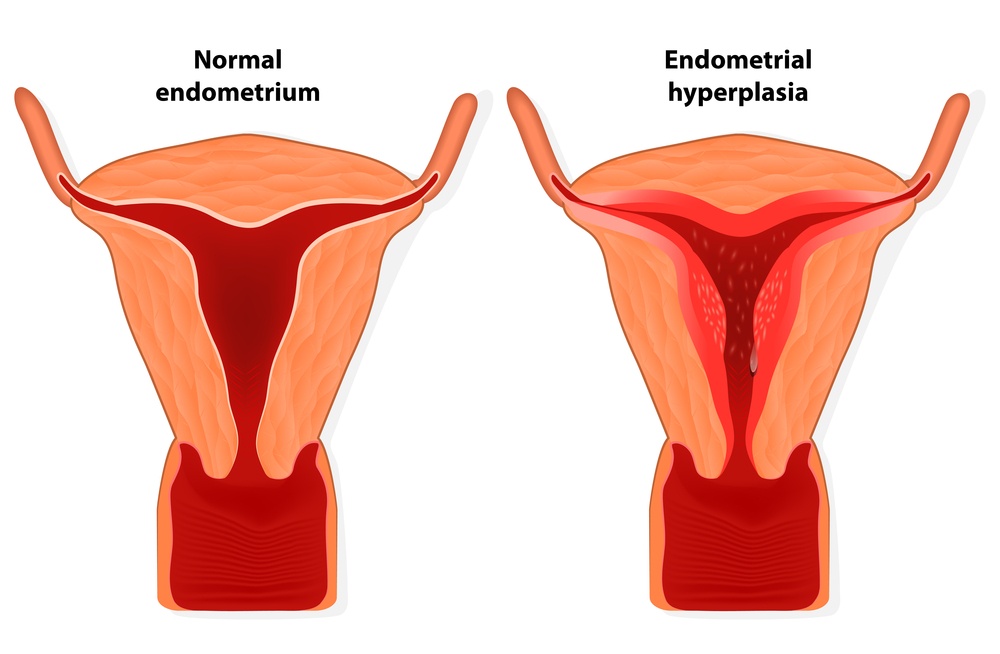The diagram on the left shows a normal endometrium, the one on the right shows endometrial hyperplasia.
The Normal Endometrium
Endometriosis takes its name from the lining of the womb, which is called the endometrium. The endometrium forms the uterine lining in which the early embryo implants. It is the most dynamic of all tissue in the body, as it is shed each month and then completely regrows.
At the beginning of the female monthly cycle the endometrium responds mainly to oestrogen and rapidly proliferates, thickens and becomes receptive for embryo implantation. The endometrium is maintained in this state by progesterone in the second half of the cycle. If pregnancy does not occur, progesterone levels fall and the endometrium disintegrates and bleeding occurs, and then the cycle begins again.
Displaced Endometrial Tissue in the Pelvis
The problem of endometriosis arises when some areas of endometrial tissue appear outside of the womb and a found somewhere else in the pelvic cavity. Once established these areas of endometrial tissue continue to respond to female hormones as if they were lining the womb. That is to say, they grow during the first half of the cycle and break down and are shed into the pelvic cavity at the end of the cycle.
Unlike menstrual fluid from the uterus, which is discharged from the body during menstruation, blood from the misplaced endometrial tissue remains in the pelvis and may cause inflammation surrounding the area. Inflammation can produce scar tissue around the area of endometriosis. These endometrial tissue sites may develop into permanent lesions or patches of endometrial tissue leading to scar tissue or cysts.
Mild forms of endometriosis are common and may not require treatment. Severe or chronic endometriosis can make it difficult for a woman to become pregnant. Overall the disease affects between 5-10% of all women.
How Endometriosis Can Affect Fertility
Around 30-40% of women with endometriosis experience fertility problems, which is two or three times the rate of infertility in the general population. The chance of becoming pregnant decreases by approximately 10-30% in women with endometriosis. However, women with mild cases of endometriosis are affected less than those with severe endometriosis. The site and nature of the endometriosis is also a factor in determining the effect on fertility.
Scar tissue resulting from endometriotic lesions can block the fallopian tubes or interfere with ovulation. Patches of endometriosis can to be sticky, for example a section of bowel or area of the bladder may stick to outer surface of the uterus and these are called adhesions. In severe cases, ovarian cysts called endometrioma sometimes form and these also interfere with ovulation.
It is thought that some of the products of inflammation such as prostaglandins may interfere with the functioning of the fallopian tube and the normal passage of the egg along it. Similarly, production of inflammatory cytokines may affect sperm motility or implantation of the developing embryo in the womb.

